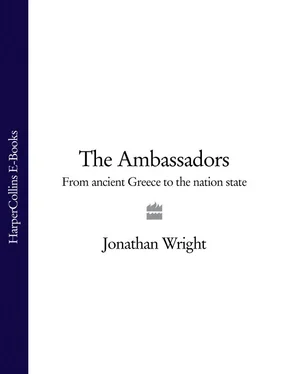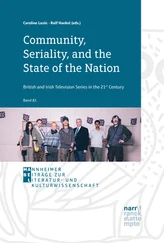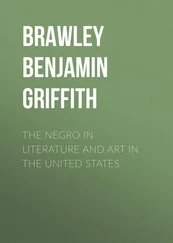Over the course of millennia, from the cuneiform civilizations of the ancient near east to the empires of the modern era, it has been the ambassadors who have allowed the world to meet itself. They would embark on missions of faith and trade, of politics and love, but wherever they journeyed they would as likely as not report back on everything – the moralities and the myths, the plants and the animals, the fashions and the foods – they encountered.
In the 200 years after Nepea’s embassy, dozens of ambassadors would shuttle back and forth between the two countries. One of them was Giles Fletcher, who began his embassy to Moscow in 1588. His ‘cosmographical description’ of the country was unsurpassed in its breadth and detail for almost two centuries. Fletcher painstakingly catalogued the humdrum – ‘the length and breadth of the country…the names of the shires’, the rivers and lakes. He noted the times when different plants were sown, offered a digest of Russian history, itemized the country’s chief exports (furs, tallow, honey, iron and salt), and commented on Russian costume and diet (a penchant for apples, peas, cherries and cucumbers). It is difficult for us to appreciate just how revelatory the accurate reporting of such basic information was to Tudor England.
Fletcher, like so many future visitors, was perhaps most taken by Russia’s changeable climate. In winter, he recounted, people were wary of holding a pewter dish lest their fingers froze against it. The sight of frozen corpses in sleds was commonplace, and many unlucky individuals ‘lose their noses, the tips of their ears, and the balls of their cheeks’. In especially hard winters ‘the bears and wolves issue by troops out of the woods, driven by hunger, and enter the villages, tearing and ravening all they can find, so that the inhabitants are fain to fly for safeguard of their lives.’ Yet summer would bring a new face to the woods. Everything was ‘so fresh and so sweet, the pastures and meadows so green and well grown…such variety of flowers, such noise of birds…that a man shall not lightly travel in a more pleasant country’.
The owls were uglier than in England; the soldiers did not march nearly so well; the nation’s religion was mired in superstition, although the concentration of political power in the hands of the tsar was a marvel to behold. Russia, Fletcher concluded, was, by turns, baffling, beautiful and bizarre. 3
Of course, ambassadors like Fletcher and Nepea rarely travelled out of sport or fascination (though a few indubitably did). Kings and queens hardly ever recruited them out of some benign commitment to enhancing the wealth of human knowledge. They were usually sent, out of naked self-interest, to do their society’s bidding. Often, they were greeted with fear, as the embodiment of an alien civilization. Their accounts could be flawed, sometimes mired in prejudice. Descriptions such as Giles Fletcher’s portrait of Muscovy were always imperfect. Amidst measured descriptions of flora and fauna, there would be diatribes against Russian drunkenness, cruelty and poor hygiene.
Imperfect observations were better than no descriptions at all, however. Moreover, the forging of a crass, unfair stereotype was every bit as important to the interplay of cultures as a dispassionate survey of a nation’s topography or diet. There would be moments of misunderstanding and embarrassment, but there would be just as many of clarity and insight. Through the efforts of ambassadors, civilizations would compare and contrast one another, prejudices and affinities would emerge, admiration or loathing would result. A staggering array of ideas and commodities – from coffee to perspective painting, from fashion trends to Galilean astronomy, from tulips to the theories of Ptolemy – would be exchanged.
Isolated, exotic individuals that they often were, ambassadors rarely failed to make an impression on their hosts. Whether monks or noblemen, whether surgeons or Renaissance poets, such ambassadors carried the enormous burden of representing their entire culture. To Tudor England in 1557, Iosip Nepea was Russia. To Russia in 1588, Giles Fletcher was Tudor England. It was through their deeds and misdeeds that one society began to fashion an understanding of another.
In 1637, another unlikely ambassador journeyed to England. Jaurar Ben Abdella had been born in Portugal. Abducted as a child and sold into slavery, he had been taken to Morocco and, after ‘the manner of those nations,’ had been ‘distesticled, or eunuch’d’. Happily, he had won favour with the emperor and become one of his most trusted counsellors. When he arrived in London as the Moroccan emperor’s envoy, the writer George Glover took a moment to reflect on the benefits of such traffic between nations. It was good for trade, he quickly suggested, and it ‘conserves and makes peace, love and amity with princes and potentates, though they are far remote from each other’. But it also ‘acquaints each nation with the language, manners, behaviour, customs and carriage of one another.’ ‘By these means, men are made capable of understanding and knowledge, and therefore prefer knowledge before wealth and riches, for the one soon fades, the other abides forever.’ 4
Glover, hopelessly idealistic as he might sound, was entirely correct. By the time Iosip Nepea arrived in London in February 1557 there had been sixty centuries of ambassadorial endeavour. He was heir to the vibrant, neglected tradition that is the subject of this book.
The book has a very simple purpose: to demonstrate just how influential ambassadors have been in the encounters, collisions and rivalries between the world’s disparate civilizations.
Negotiating a path through the history of the ambassadors is an awkward task, so it may prove helpful here to briefly map out our itinerary. To help find our bearings, we have quite deliberately begun close to the end of the story, in the relatively familiar world of Tudor England, with the journey of an ambassador who bears at least a passing resemblance to the diplomat of the modern world. As well as recounting the momentous cultural contributions of ambassadors, the book also examines how the business of embassy – the rituals and the protocols, the problems and the purposes – reached this point. How did issues such as diplomatic immunity, diplomatic precedence or diplomatic gift-giving develop? How did societies decide what qualities an ideal ambassador ought to possess?
The book is divided into five sections, progressing from ancient Greece to the European Enlightenment, each of which represents an extended historical moment to be explored. The first section, concerned with the ancient world, turns its gaze towards ambassadorial endeavour and its repercussions in classical Athens, Mauryan India and Han dynasty China – three of the storm-centres of diplomacy from the fourth to the first century BC. There are journeys that put Iosip Nepea’s to shame, and shifts in the political tectonics of the world, but there are also insights into the humdrum detail of the ancient ambassador’s lot and the less than edifying spectacle of one such ambassador fighting for his professional life.
The next section moves us forward to the ninth century AD – one of the high water marks of diplomatic history – and takes the Byzantine Empire, the early Islamic caliphates and the emperor Charlemagne as its points of departure. The places where diplomacy thrived, the crucibles of ambassadorial endeavour, had a habit of also being the most important places in the world at any given time, and the history of the ambassadors maps out their rise, fall and vicissitudes.
The next sections visit the Middle Ages – homing in on the ambassadorial adventures provoked by the Mongol invasions of the thirteenth century and the rise of the ‘new diplomacy’ in fifteenth-century Italy – and the religious upheavals and worldwide explorations of the sixteenth century. A final section brings us to the dawn of the modern ambassadorial age in the period of the European Enlightenment.
Читать дальше












